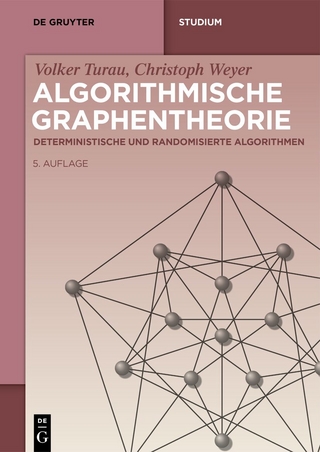
Design of Survivable Networks with Bounded Rings
Seiten
2000
Springer (Verlag)
978-0-7923-6414-6 (ISBN)
Springer (Verlag)
978-0-7923-6414-6 (ISBN)
These days, the nature of services and the volume of demand in the telecommu nication industry is changing radically, with the replacement of analog transmis sion and traditional copper cables by digital technology and fiber optic transmis sion equipment. Moreover, we see an increasing competition among providers of telecommunication services, and the development of a broad range of new services for users, combining voice, data, graphics and video. Telecommunication network planning has thus become an important problem area for developing and applying optimization models. Telephone companies have initiated extensive modeling and planning efforts to expand and upgrade their transmission facilities, which are, for most national telecommunication networks, divided in three main levels (see Balakrishnan et al. [5]), namely, l. the long-distance or backbone network that typically connects city pairs through gateway nodes; 2. the inter-office or switching center network within each city, that interconnects switching centers in different subdivisions (clusters of customers) and provides access to the gateway(s) node(s); 1 2 DESIGN OF SURVNABLE NETWORKS WITH BOUNDED RINGS 3. the local access network that connects individual subscribers belonging to a cluster to the corresponding switching center. These three levels differ in several ways including their design criteria. Ideally, the design of a telecommunication network should simultaneously account for these three levels. However, to simplify the planning task, the overall planning problem is decomposed by considering each level separately.
List of Figures. List of Tables. Acknowledgements. 1. Introduction. 2. Survivable Network Design: A Survey. 3. Two-Connected Networks with Bounded Rings: The Model. 4. Polyhedral Study. 5. The Special Case of Rings with Bounded Cardinality. 6. A Branch-and-Cut Algorithm. 7. Heuristics. 8. Computational Results. 9. Conclusion. Appendices. References. Index.
| Reihe/Serie | Network Theory and Applications ; 2 |
|---|---|
| Zusatzinfo | 12 Illustrations, black and white; XX, 204 p. 12 illus. |
| Verlagsort | Dordrecht |
| Sprache | englisch |
| Maße | 155 x 235 mm |
| Themenwelt | Mathematik / Informatik ► Informatik ► Software Entwicklung |
| Mathematik / Informatik ► Mathematik ► Angewandte Mathematik | |
| Mathematik / Informatik ► Mathematik ► Wahrscheinlichkeit / Kombinatorik | |
| ISBN-10 | 0-7923-6414-7 / 0792364147 |
| ISBN-13 | 978-0-7923-6414-6 / 9780792364146 |
| Zustand | Neuware |
| Haben Sie eine Frage zum Produkt? |
Mehr entdecken
aus dem Bereich
aus dem Bereich
Deterministische und randomisierte Algorithmen
Buch | Softcover (2024)
De Gruyter Oldenbourg (Verlag)
CHF 89,95
Programmieren erlernen und technische Fragestellungen lösen
Buch | Softcover (2023)
Springer Vieweg (Verlag)
CHF 62,95


